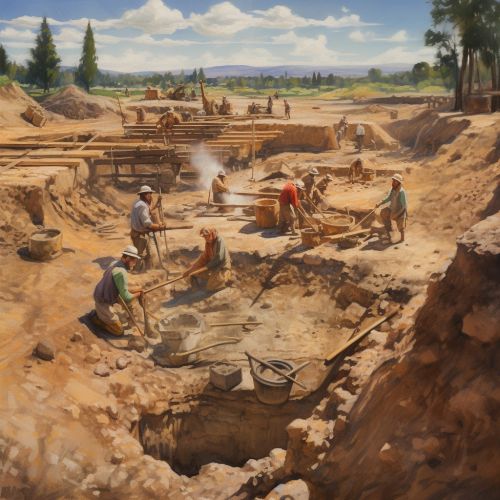Systems Theory in Archaeology
Introduction
Systems theory in archaeology is a part of the wider systems theory studies, which is a transdisciplinary field that aims to understand systems in a holistic manner. Systems theory in archaeology is an approach that archaeologists use to interpret patterns in archaeological data. The theory is based on the idea that the distribution of archaeological material and the patterns that can be observed in them are not the result of random processes, but are instead the product of a system of interrelated parts.


History
The application of systems theory in archaeology was first proposed in the 1960s as part of the New Archaeology movement, which sought to make archaeology more scientific and theoretical. This approach was a departure from the traditional archaeological methods that focused on the description and classification of archaeological artifacts. Instead, systems theory in archaeology aimed to understand the underlying processes that led to the creation of these artifacts and their distribution.
Concepts and Principles
Systems theory in archaeology is based on several key concepts and principles. These include the concepts of system, subsystem, and supersystem, as well as the principles of feedback, equilibrium, and disequilibrium.
A system in this context is defined as a set of interrelated parts that function as a whole. This can be an entire archaeological site, a single artifact, or even a society. A subsystem is a part of a larger system, while a supersystem is a system that contains other systems.
Feedback refers to the process by which the output of a system is used as an input, affecting the behavior of the system. This can be either positive feedback, which amplifies changes and drives the system away from equilibrium, or negative feedback, which dampens changes and helps maintain equilibrium.
Equilibrium refers to a state in which a system is balanced and stable, while disequilibrium refers to a state of imbalance or instability. In the context of archaeology, these concepts are used to understand the dynamics of past societies and how they responded to changes in their environment or social structure.
Application in Archaeology
Systems theory in archaeology is used in various ways to interpret archaeological data. For example, it can be used to analyze the distribution of artifacts within an archaeological site, to understand the social and economic systems that produced these artifacts, or to study the interaction between different societies.
One of the main applications of systems theory in archaeology is in the study of settlement patterns. By viewing a group of settlements as a system, archaeologists can analyze the relationships between different settlements, the distribution of resources, and the social and economic interactions that occurred within and between these settlements.
Another application is in the study of artifact assemblages. By viewing an assemblage as a system, archaeologists can analyze the relationships between different types of artifacts, the processes that led to their creation and discard, and the social and economic systems that produced them.
Criticisms and Limitations
While systems theory has been influential in archaeology, it has also been subject to various criticisms. One of the main criticisms is that it is overly deterministic, assuming that all aspects of a society can be understood in terms of systems and their interactions. This can lead to an oversimplification of complex social and cultural phenomena.
Another criticism is that systems theory in archaeology often relies on modern analogies to interpret past societies. This can lead to anachronistic interpretations that do not take into account the unique cultural and historical contexts of these societies.
Despite these criticisms, systems theory remains an important tool in archaeological research, providing a framework for understanding the complex interactions between people, their environment, and their material culture.
